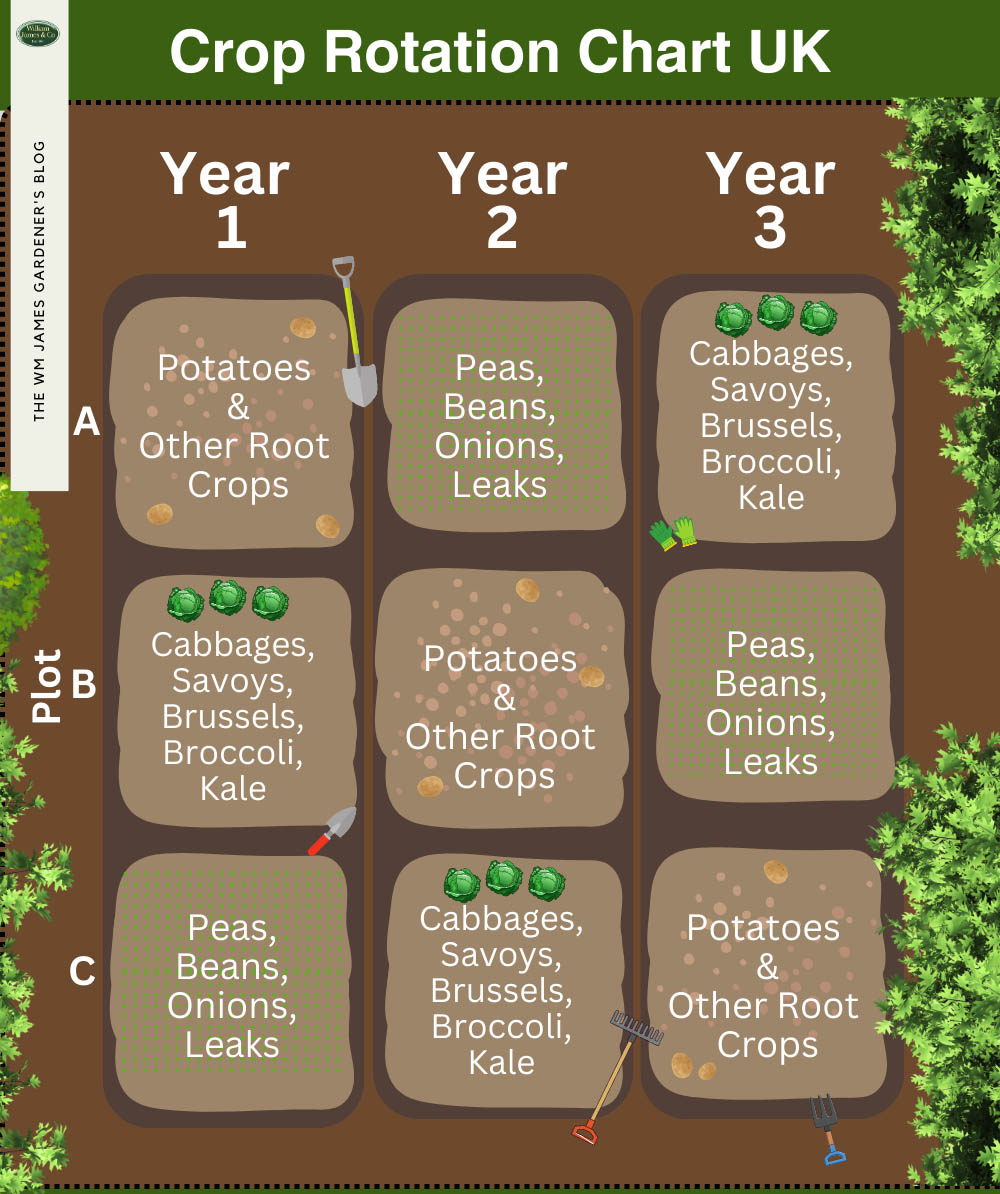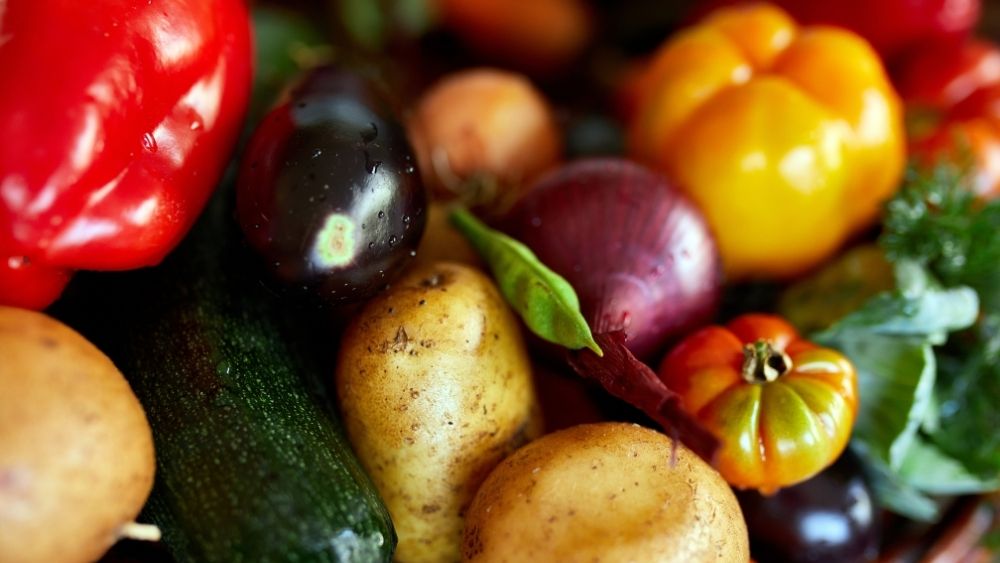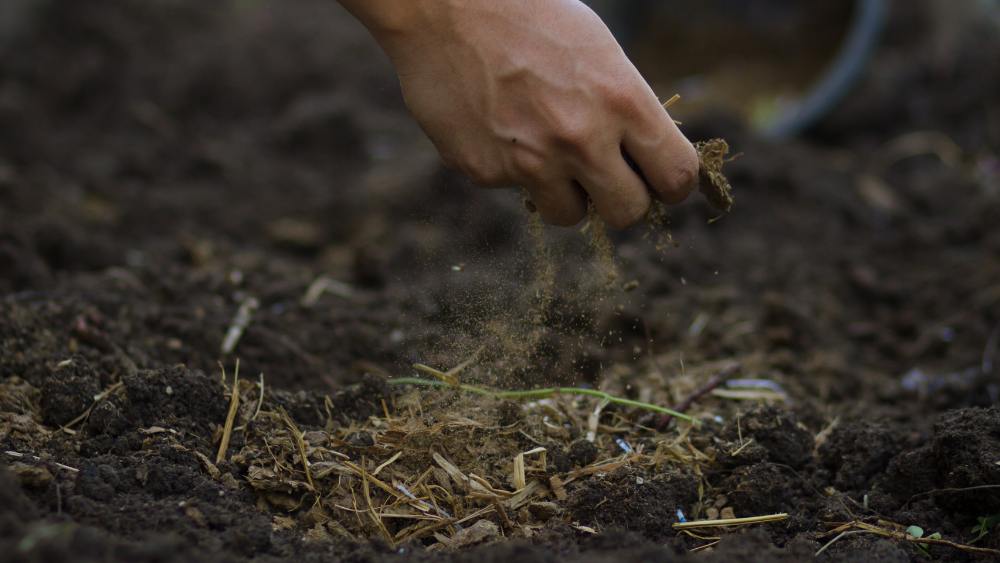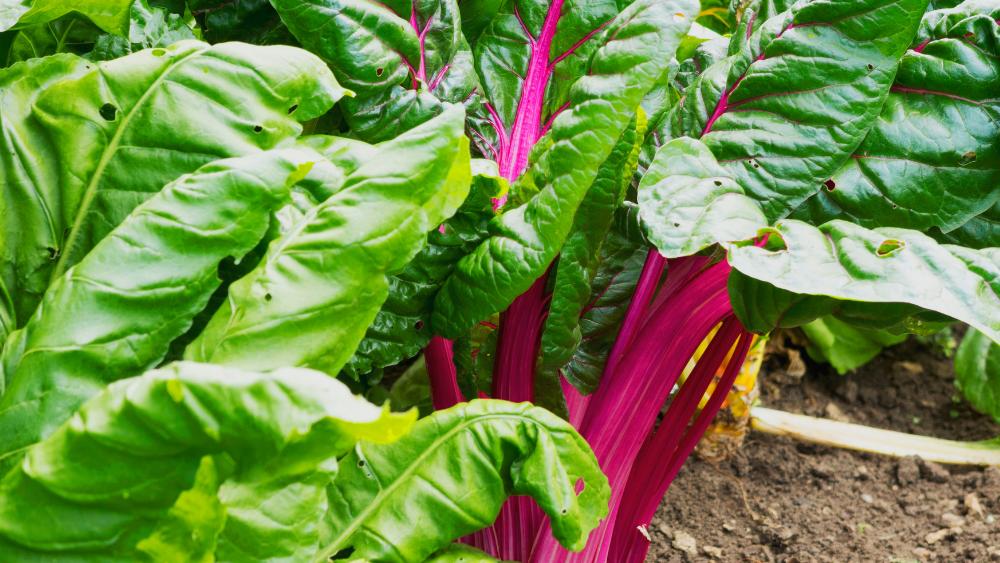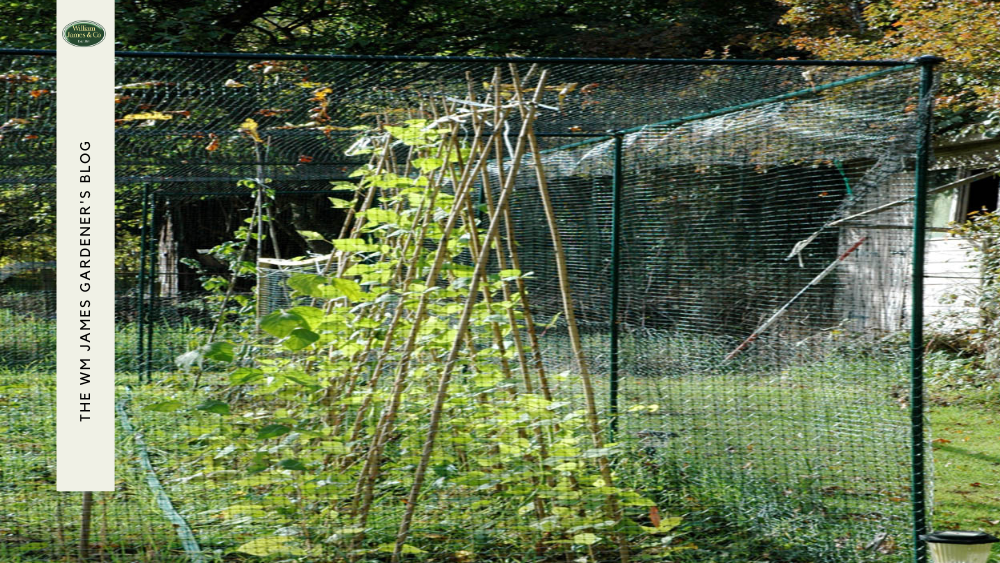We use cookies to make your experience better. To comply with the new e-Privacy directive, we need to ask for your consent to set the cookies. Learn more.
Crop Rotation Charts & Examples for Beginner Green Thumbs
- Admin
- WM James Gardening Blog
- 23 Sept 2020
-
38views
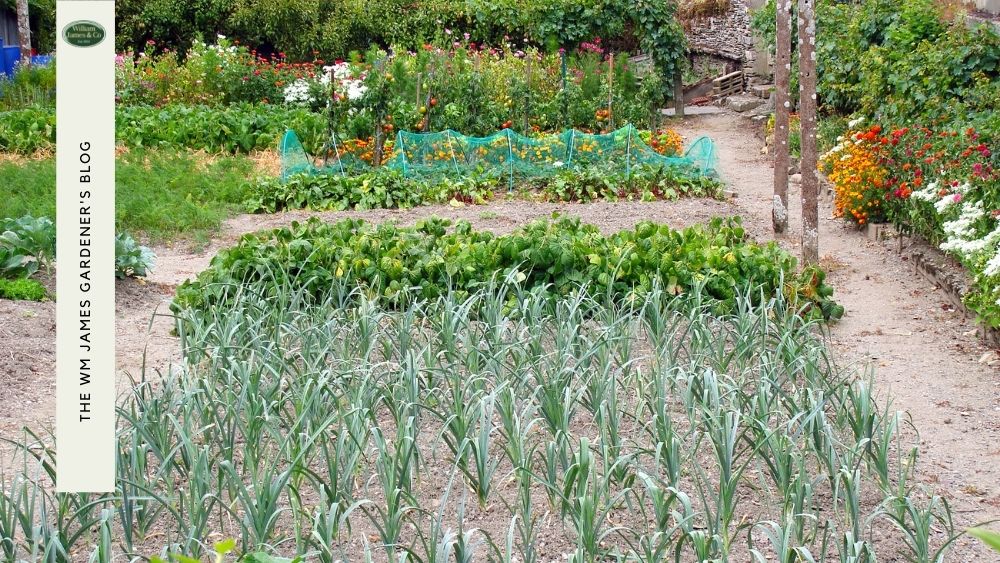
A crop rotation chart is like a secret map that helps you planning out your garden for the upcoming season.
By rotating crops, you can maximise space and prevent diseases from infecting your plants, resulting in a healthier and more productive garden.
Follow along as we break down the basics of crop rotation and provide some examples to get you started.
What is Crop Rotation?
Crop rotation is a method gardeners use to reduce disease and soil malnutrition and ensure a healthy crop of fruit and vegetables every season.
To do this, gardeners grow specific groups of fruit and vegetables in different parts of their garden or allotment plots every year.
Regardless of the size of your garden, crop rotation is an important activity.
|
Top tip: If your garden is small (and we mean really small) and you don't have space to properly separate your crops, this can be bad news, especially if you have crops susceptible to pests and diseases. In this case, we suggest taking a cultivating break. This basically means that you don't plant the crop that has a high chance of harbouring nasties until it is safe to do so again. Which could be in a couple of seasons or longer. The results will be worth it, though. |
Cultivated soil loses its productivity, and you'll find that different plants and vegetables take different amounts of nutrients from the soil. Planting the same species in the same plot every year will quickly lead to malnourishment and poor results.
So really, what's the point of spending time sowing and growing if you're not doing it properly?
Additionally, it’s essential to know which types of plants and vegetables to grow together to increase the efficiency of crop rotation.
Make sure you have quality garden tools to make your crop rotation successful and effective:
Crop Rotation Chart Example for UK Gardens
Now that you've got the basics of crop rotation let's get into crop rotation charts.
A crop rotation chart is basically a plan of where your vegetables have been and will be planted. Crop rotation can only be successful when you've kept accurate records of where your vegetables have been planted in the past. So it's important not to skip that step.
Here is what a typical visual crop rotation chart would look like, and one you can use for your own garden or allotment:
Key Components of a Crop Rotation Chart
|
| Main Vegetable Groups/Families | Types of Veg Included |
| Brassicas |
|
| Legumes |
|
| Onions |
|
| Potato family |
|
| Roots |
|
Specific Crop Rotation Example to Use
If you've got questions like what to plant after onions, or should I plant legumes with brassicas? Hopefully, this will help you.
This is an example of a four-year crop rotation to give you a better idea of how it might look. We have combined the onions and roots into one section and left legumes in their own area, as they take up much more space than the others.
| Year One | Year Two | Year Three | Year Four | |
| Section One | Legumes | Brassicas | Potatoes | Onions & Roots |
| Section Two | Brassicas | Potatoes | Onions & Roots | Legumes |
| Section Three | Potatoes | Onions & Roots | Legumes | Brassicas |
| Section Four | Onions & Roots | Legumes | Brassicas | Potatoes |
| Section Five | Perennial Vegetables | Perennial Vegetables | Perennial Vegetables | Perennial Vegetables |
As you can see, each crop moves one step every year into a new section.
How to Do Crop Rotation for UK Gardens
Carrying out crop rotation is a straightforward task. Still, it takes some planning and prior knowledge to ensure it’s done effectively. Once you know where everything will be planted, it’s merely a case of planting and sowing.
If you're new to sowing and don't quite have all the gear yet, below are some handy tools that we recommend. Many of our tools are Burgon and Ball, which are endorsed by the Royal Horticultural Society – you won't go wrong with these high-quality, ergonomic tools.
Most annual vegetables can be included in your crop rotation plan.
On the other hand, perennial vegetables like rhubarb, asparagus and artichoke do not need to be included in the crop rotation, as they are grown all year round.
Other annual crops like pumpkins, runner beans, sweetcorn and squashes also don’t need to be included. You’ll know where vegetables like these grow best in your garden; avoid growing them in the same place too often.
The Advantages of Crop Rotation
Crop rotation does prove to be a real advantage when it comes to maintaining a healthy garden.
Just some of the benefits of carrying out this task in your garden include:
- Improves soil health
- Reduces soil erosion
- Helps control pests and diseases
- Increases soil fertility for healthier crops
- Boosts the crop yield (the amount of crop grown per unit area of land)
If your plan this year is to knuckle down and get your garden in tip-top condition, then crop rotation can be an essential tool in achieving this. By simply rotating what you plant in each area of your garden, you can significantly improve the overall health and productivity of your plants.
Are There Disadvantages of Crop Rotation?
However, like most things in life, there are also some disadvantages to crop rotation that should be taken into consideration. These include:
- Crop rotation takes planning and management
- More labour is required
- Seasonal constraints for certain vegetables
- If you have limited space, it can be tricky or not possible
But, really, these are only minor things, and the only real restriction is the space factor. Additionally, the benefits of crop rotation far outweigh any potential drawbacks.
Key Crop Rotation Takeaways
If you think you have the time, then yes! Absolutely try crop rotation and see what a difference it can make to your crop yield.
Crop rotation has many helpful benefits that outweigh its negative impacts. With the right space, time, and equipment, you should be able to successfully implement it in your allotment.
Remember, though, everything comes with practice, and if it doesn't work out the first time around, don't be disheartened; give it another go!
Happy rotating!
|
For more help and advice for beginner gardeners, check out our Gardener’s Diary blog! |
Read Our Gardener’s Diary Blog
FAQs
What Follows Onions in Crop Rotation?
To prevent white onion rot, you can plant various crops after onions, as long as they aren't another onion or legume. Some of these could include tomatoes, peppers, or Chinese cabbage (Pak Choi).
What to Plant After Potatoes in a Crop Rotation?
In your crop rotation, potatoes should be followed by onions and root crops/vegetables. Potatoes help break the soil up, creating optimum growing conditions for root vegetables.
What Vegetables Don't Need Crop Rotation?
Sweetcorn, beans, cucumber, and radish are among the vegetables that don't benefit from crop rotation. You can fit these anywhere that suits you. But it's not ideal to keep them in the exact same spot for many years.
What is the 4-Cycle Crop Rotation?
Crop rotation is typically carried out on a 4-year cycle (or 3-years). It is the practice of changing the location of crops in a field from season to season. In a four-year rotation, one type of crop is planted in year one, another type of crop is planted in year two, etc.

